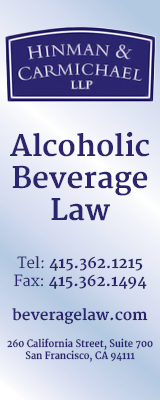FREE! Subscribe to News Fetch, THE daily wine industry briefing - Click Here
![Banner_Xpur_160x600---Wine-Industry-Insight[63]](/wp-content/uploads/Banner_Xpur_160x600-Wine-Industry-Insight63.jpg) |
 ALSO SPONSORED BY: 
Wine Industry Insight |
 |
NIH halts controversial moderate alcohol consumption study first revealed by Wine Industry Insight 4 years ago
The National Institutes of Health says it has halted a $100 million industry-funded moderate drinking study whose origins were first revealed in 2014 by Wine Industry Insight reporting.

NIH Director Francis Collins told a Senate subcommittee yesterday said that enrollment in the Moderate Alcohol and Cardiovascular Health (MACH15) study had been halted a on May 12 as part of an internal investigation about ethical concerns over the funding sources and how the money was solicited.
Collins said: “For NIH, our reputation is so critical. And if we are putting ourselves in a circumstance where that could be called into question, I felt like we had to look at that very seriously and come up with another strategy.
The statement was made in testimony before the Senate Appropriations Subcommittee on Health and Human Services and Related Agencies regarding its 2019 budget request for the research centers.
In March, NIH announced its intention to investigate the funding process.
Wine Industry Insight 2014 article first to reveal NIH fund solicitation
On Feb 28, 2014, WII was the first to report that the National Institute of Alcohol Abuse and Alcoholism (NIAAA) was soliciting funds from the alcoholic beverage industry — US Govt Asking Industry To Fund Most Of $50 Million Alcohol/Health Study.
That study, a massive, multi-year investigation, was headed by Kenneth J. Mukamal, an Associate Professor of Medicine and General Internist at Beth Israel Deaconess Medical Center in Boston.
According to documents obtained in 2014 by Wine Industry Insight, beer and spirits companies agreed to support the study. The Wine Institute was solicited for support but did not participate.
2017: Wine Industry Insight shares premium article with the New York Times
In the fall of 2017, Wine Industry Insight received a request from the New York Times and shared the full text of its premium article. On March 17, 2018, the New York Times published a piece with updated details on the solicitation of industry funds by NIH scientists — Federal Agency Courted Alcohol Industry to Fund Study on Benefits of Moderate Drinking
Previous Wine Industry Insight Reporting
Subsequently, the details of the study were available online by the NIH and formed the basis for two additional articles from Wine Industry Insight:
- March 22, 2018 — NIH to investigate funding process of massive moderate alcohol consumption study
- Nov. 29, 2017 — 14 Reasons the new NIH/industry-funded moderate alcohol & health study could be a $100 Million CREDIBILITY flop
- Dec. 5, 2017 — $100 Million NIH moderate alcohol consumption study funded by beer and spirits companies offers critics numerous serious flaws to exploit
- February 28, 2014 — US Govt Asking Industry To Fund Most Of $50 Million Alcohol/Health Study




